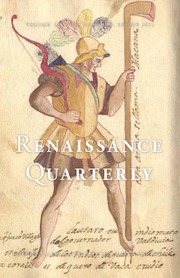Heidi Gearhart's Theophilus and the Theory and Practice of Medieval Art analyzes the twelfth-century treatise On Diverse Arts (De diversis artibus), an important but puzzling text comprising three books, each with a religious prologue followed by instructions for paintings, stained glass, and metalwork, respectively. Its author calls himself Theophilus, likely a Benedictine monk who lived in or around Cologne or Paderborn in the first decades of the twelfth century. On Diverse Arts has been deemed a mere recipe book and criticized for lacking structure. Gearhart, however, finds a framework in its prologues and a value system for art in its language. Furthermore, her analyses of the text's surviving manuscripts suggest that its audience extended beyond artists in workshops. The result is a thought-provoking challenge to the notion of what a theory of art should be. Within On Diverse Arts, Gearhart argues, is a philosophy of art in which theory and practice are inextricably linked.
Particularly illuminating are her analyses of individual manuscripts of On Diverse Arts, which she uses as springboards for further discussion in each of her four chapters. Chapter 1, for example, opens with an analysis of the mid-twelfth-century manuscript of On Diverse Arts in Wolfenbüttel, Germany, which is bound with a copy of Vitruvius's On Architecture. Gearhart shows how the medieval treatise parallels and builds upon the ancient text, using this point to underscore her larger argument that On Diverse Arts was a sophisticated treatise written with an eye to cumulative learning and twelfth-century pedagogy more broadly. She locates the text's structuring elements—namely, the gifts of the Holy Spirit—in its prologues. Incremental in their ascent toward perfection, the gifts add a spiritual dimension to Theophilus's instructions for art making, which are likewise structured in a cumulative manner.
In chapter 2, Gearhart turns her attention to the role of matter in the text. She argues that for Theophilus, art is the transformation of materials into useful objects, which serves to justify monastic art at a time when it could be treated with suspicion. For Theophilus, Gearhart shows, it is important that the reader know and understand the properties and origins of his various materials. Gearhart gives special attention to Theophilus's language in chapter 3, delineating how Theophilus moralizes the making of art by presenting it as a series of choices, comparable to the exercise of free will. It is the process—the good or bad decisions—rather than the finished product that concerns Theophilus, Gearhart argues, and art making is a way to practice virtue.
Chapter 4 is especially rich. Using an early manuscript of On Diverse Arts, now in Vienna, as her starting point, Gearhart explores the virtue of skill, which Theophilus describes as “the order, variety and measure (quo ordine qua varietate, qua mensura) with which to pursue your varied work (diverso operi tuo)” (106). Here she complements her textual analysis with detailed case studies of twelfth-century metalworks that display these qualities. In chapter 4 Gearhart also addresses the question of Theophilus's relationship to Roger of Helmarshausen, one of the few known artists of his time. Because an inscription in the Vienna manuscript announces that Theophilus's name is Roger, some scholars have argued that the two men were one and the same. This identification is controversial. Gearhart believes it to be likely, though she does not fully commit to it, and proving it is not her objective. More important, she argues, is that the inclusion of Roger's name was part of a larger effort to enhance the treatise's authority. Given the inscription's weight in the debate regarding Roger, however, some discussion of its paleography would have been helpful. Furthermore, despite her neutrality toward the identification of Theophilus as Roger, most of the objects she discusses have been attributed to him or his workshop, which ultimately promotes their co-identification.
Quibbles about Roger, however, do not diminish Gearhart's impressive contribution to our understanding of medieval artists, especially those in monastic contexts, and how they approached their work. Perhaps with a nod to Theophilus's own regard for diligence, the book itself has been designed with care, complete with beautiful color plates and crisp black-and-white images.


